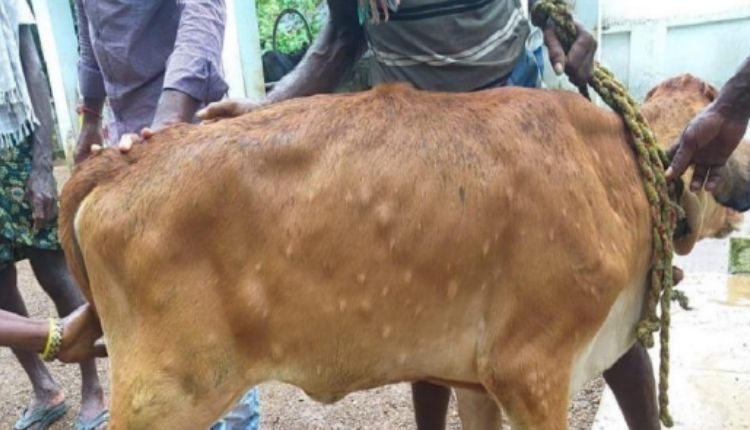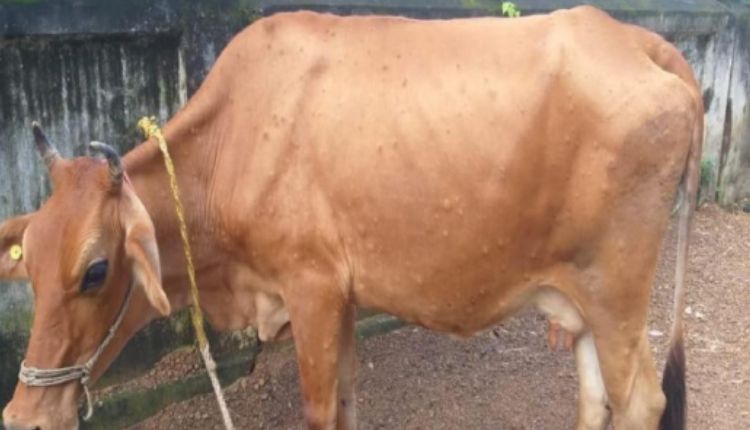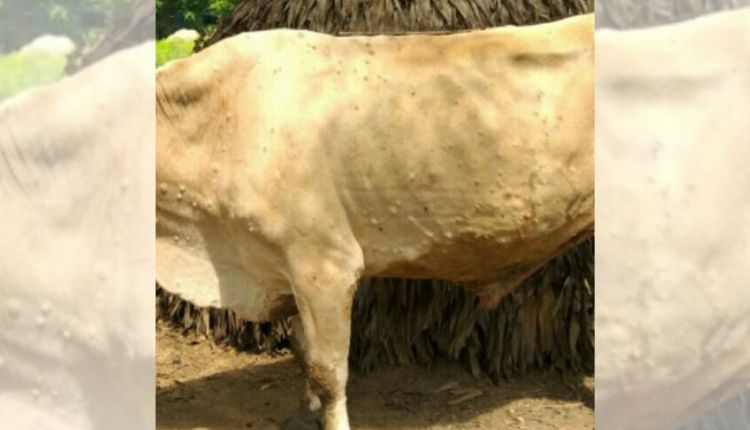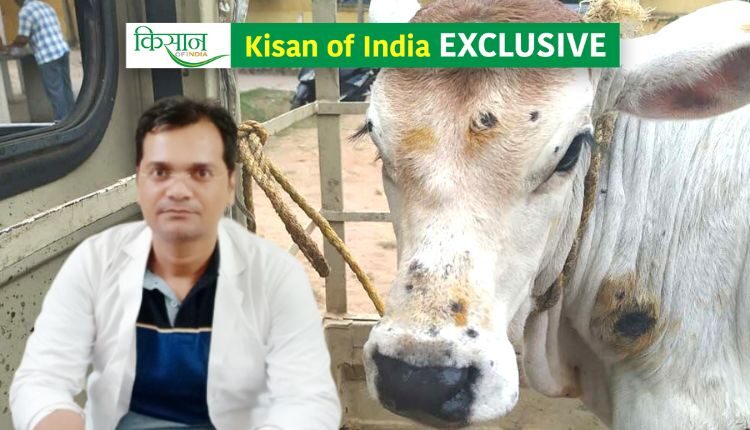Lumpy Skin Disease: How to protect milch animals?
Veterinarians need to be alert, do not panic, be careful from Lumpy Skin Disease
This nodular skin disease i.e. lumpy skin disease is caused by the infection of the pox virus Campri pox virus in cows and buffaloes. Due to this disease, large lumps are formed on the skin all over the body of the animal. For more information about lumpy skin disease, special conversation with Dr. Rajpal Diwakar, a veterinary specialist working in Narendra Dev University of Agriculture and Technology, Kumarganj.
The danger of Lumpy Skin Disease, LSD, which spreads in milch animals, is spreading in the country and the state. Its cases are increasing continuously. At the same time, there are reports of death of cattle due to this disease in many states. Regarding what is this disease and how livestock owners can protect their cattle from this disease, Kisan of India spoke to Assistant Professor and Veterinary Specialist, Dr. Rajpal Diwakar from Animal Microbiology Department of the Narendra Dev University of Agriculture and Technology, Kumarganj.
Dr. Rajpal Diwakar informed about lumpy skin disease that its effect is being seen more in Rajasthan at this time. If livestock owners do not pay attention to protection, then this virus-borne disease, which spreads due to contact of cattle with each other, can spread to other states. That’s why animal owners need to be careful.

What is lumpy skin disease?
Veterinary specialist Dr. Rajpal Diwakar explains that this nodular skin disease i.e. lumpy skin disease, in cows and buffaloes is caused by the infection of Campri Pox virus. Due to this disease, large lumps are formed on the skin all over the body of the animal. Lumpy skin disease is spread by mosquitoes, flies, animal saliva, fresh water and animal feed. It is transmitted from sick animal to the body of healthy animal by carriers like mosquitoes and flies.
Also Read: Carrot Grass: Quickly Destroy This Worst Enemy Of Soil And Farmers
When does lumpy skin disease spread?
Expert said that the outbreak of lumpy skin disease is more in hot and humid weather. The way the heat and humidity is increasing in present times, the risk of spreading the disease has also increased. However, its effect diminishes on its own in cold weather.
Healthy animals that move or come in contact with sick animals can also become infected. The disease can also be spread by drinking, bathing and gathering of water in the pond of cows and buffaloes together.

Symptoms of Lumpy Skin Disease
Giving information about the symptoms of lumpy skin disease, Dr. Rajpal Diwakar said that lump-like bulges form on the skin of the animal suffering from this disease. It grows throughout the body in the form of nodules of two to five centimetres in diameter.
These lumps are spread especially in the area around the head, neck, limbs and genitals. Within a few hours of the disease, lumps form all over the body. Along with this, water starts coming out of the nose and eyes of the cattle. The body temperature rises. Cattle get into the grip of fever. Abortion can also occur if the animal is pregnant.
Swelling in the feet can also occur due to pneumonia, if you are suffering from excessive infection. There is severe pain in the head and neck part. During this time the milking capacity of the animals also decreases.

How to control and protect?
According to veterinary specialist Dr. Rajpal Diwakar, there is no cure for virus-borne lumpy skin disease yet. Its vaccination is the most effective means of prevention and control. At the same time, the disease can be controlled by the use of steroidal anti-inflammatory and antibiotics to avoid the disease.
Keep the infected animal tied up in one place. Do not allow them to come into contact with healthy animals. Vaccinate healthy animals and treat sick animals with fever and pain medicine and according to symptoms. Do not keep new animals with old animals. Keep them separately for at least 15 days.
LSD is not a Zoonotic disease (infection from animal to human)
Dr. Rajpal Diwakar said that this virus-borne disease does not come under the category of zoonotic disease. So animal owners should not be afraid of this without reason. Veterinarians should be alert from the misconception spread on social media about this disease. If symptoms of this disease are seen in animals, then immediately contact the nearest veterinary hospital and get it treated properly.
Contact Details – If farmers want to share any valuable information or experiences related to farming, they can connect with us via phone or whatsapp at 9599273766 or you can write to us at “[email protected]”. Through Kisan of India, we will convey your message to the people, because we believe that if the farmers are advanced then the country is happy.



